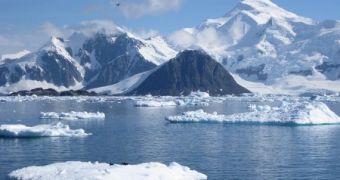Only yesterday, the scientific journal Nature Climate Change witnessed the publication of a new study stating that, all things considered, the world might soon have to face a sea lever rise greater than that previously estimated by the Intergovernmental Panel on Climate Change.
This research was carried out by a team of specialists working with the University of Bristol, who focused first and foremost on the ice sheets that are now part and parcel of Greenland and the Antarctic.
"A major gap in predictive capability concerning the future evolution of the ice sheets was identified in the Fourth Assessment Report (AR4) of the Intergovernmental Panel on Climate Change."
"As a consequence, it has been suggested that the AR4 estimates of future sea-level rise from this source may have been underestimated," the researchers offered as an explanation for their decision to investigate this issue.
This team of scientists from the University of Bristol shows that these ice sheets contain most of our planet's glacier ice, and were they to entirely melt, sea levels could go up by as much as 63 meters.
Interestingly enough, said glaciers are also the most unpredictable when it comes to figuring out what their melting and/or freezing patterns over the following years will be.
Because of this, Professor Jonathan Bamber and Professor Willy Aspinall had to resort to an approach that made use of soliciting and pooling expert judgements (a method also used when researching volcanic eruptions and the spread of vector borne diseases) in order to be able to make valid observations concerning how the Greenland and the Antarctic ice sheets will behave in the future.
They have eventually found that, by the year 2100, melting ice sheets are likely to cause sea levels to go up by roughly 29 centimeters, and that there is also a small chance (i.e. about 5 percent) that this rise in global sea levels will amount to 84 centimeters.
Once other sources of global sea rise are also taken into consideration, the results are quite startling: by the end of the century, sea levels might be an estimated 1 meter higher than they are now.
The funding needed in order to carry out this research was provided by Ice2sea, and EU program that was set up precisely for supporting research into present and future global sea levels.

 14 DAY TRIAL //
14 DAY TRIAL //